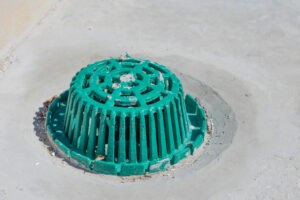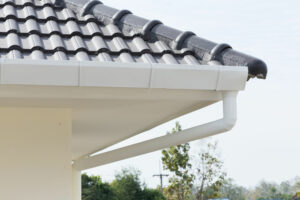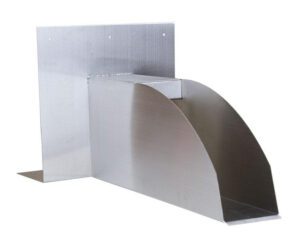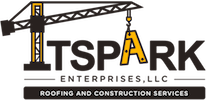A flat roof is desirable for many. It’s a unique and unconventional architectural design. It is even considered a stable and protective structure against environmental elements like wind and hail. However, flat roofs suffer from poor drainage! It can suffer from water accumulation because of the lack of incline, and therefore lack of forces of gravity that give way to natural water runoff. It is essential to install a drainage solution into your flat roof to remove debris and moisture that should not be there. The flat roof drainage solution will help prevent as much damage as possible.
Lack of drainage can lead to a plethora of issues, including but not limited to:
- Build-up of debris like twigs and leaves
- Leaks approaching the chimney and vent pipes
- Pulled away flashing
- Popped nails
- Exposed railheads
- Wearing away of gravel or stone from the shingles
- Leaks that go through the roof, putting the home at risk of fire and electric hazards
Depending on individual needs and financial situations, there are three different drainage solutions available for those with flat roofs, each with their advantages and disadvantages.
1. Interior Drains
The interior drain’s function has been equated to that of a shower or sink drain. These drains are placed in the areas of the roof where the most water is collected. These drains lead the water into a system of pipes that go below the roof and drain the water. The drains are often placed at the center of the building. Aluminum or copper is also inserted into these areas of the roof. Once the water reaches the pipes, it travels until it lands into a gutter or downspout at the side of the building. Fortunately, the structure and walls protect these pipes from outside forces, reducing the risk of potential cracking or freezing. This type of drainage system is quite favorable because it protects the walls and foundation from water damage, and it is customizable to your home.
The drains and pipes can become clogged with debris, so regular maintenance requires a professional technician. One small amount of debris or other material can clog the entire system, resulting in standing pools of water, which was the original issue in the first place. Still, if maintained regularly, this can be a great option!

2. Gutters
The second type of drainage system is the gutter. Gutters are the most commonly-used for ALL roof types, likely due to being low-cost and easiest to install out of the three options. Gutters catch rainwater as it descends the edge of the roof, and relocates it into a downspout. The downspout then releases it far away from the foundation of the building. Doing this ensures that water will not build up around the building and cause damage to the foundation, side, windows, and doorways. The gutter allows for control of the water flow as it leaves the roof.
With its cost-effectiveness and simplicity comes the gutter’s setback of being high maintenance, as it requires continuous cleaning throughout the year. Much like the interior drain, it can gather debris that will block the flow of water and prevent drainage. However, instead of gathering as standing pools of water, it will overflow and run down the side of the building, then causing damage to the sides and the foundation.

3. Scuppers
Scuppers are recognized as the “top choice” of drainage solutions. It is the most effective, while still being of low cost and low maintenance. Along the edge of the roof and openings in the outer walls are large square openings created to propel water away from the side of the building. Scuppers help avoid water damage at the foundation. Water can travel down through the wall via a metal box that protects all around the scupper. Or water can go through downspouts implemented right under the large square openings to catch water and control the way and rate in which it drains away. The scupper is easy to maintain and keeps the walls and the foundation dry and stabilized. A competitive advantage to the scupper, unlike the interior drain and the gutter, is that it will rarely get backed up by debris because everything washes off of the roof. However, downspouts implemented underneath the scuppers are susceptible to clogs and should be checked regularly for debris and other matter. As a result, the scupper can be a less desirable choice for areas with heavy rain.

All three of these drainage solutions can be ideal for your flat roof as long as it suits the corresponding design, installation, and access to maintenance. It is essential to consult with a professional roofing contractor and engineer to ensure that you are choosing the right solution for your roof.
TSpark Enterprises offers a wide range of roofing services, including work such as roof maintenance, gutter maintenance, roof replacements, leak diagnoses, roof repairs, roof tiles, metal roof, asphalt shingles, and more. Visit our website or call (850) 766-1340 to get a free estimate and embark on your roof maintaining journey today!

